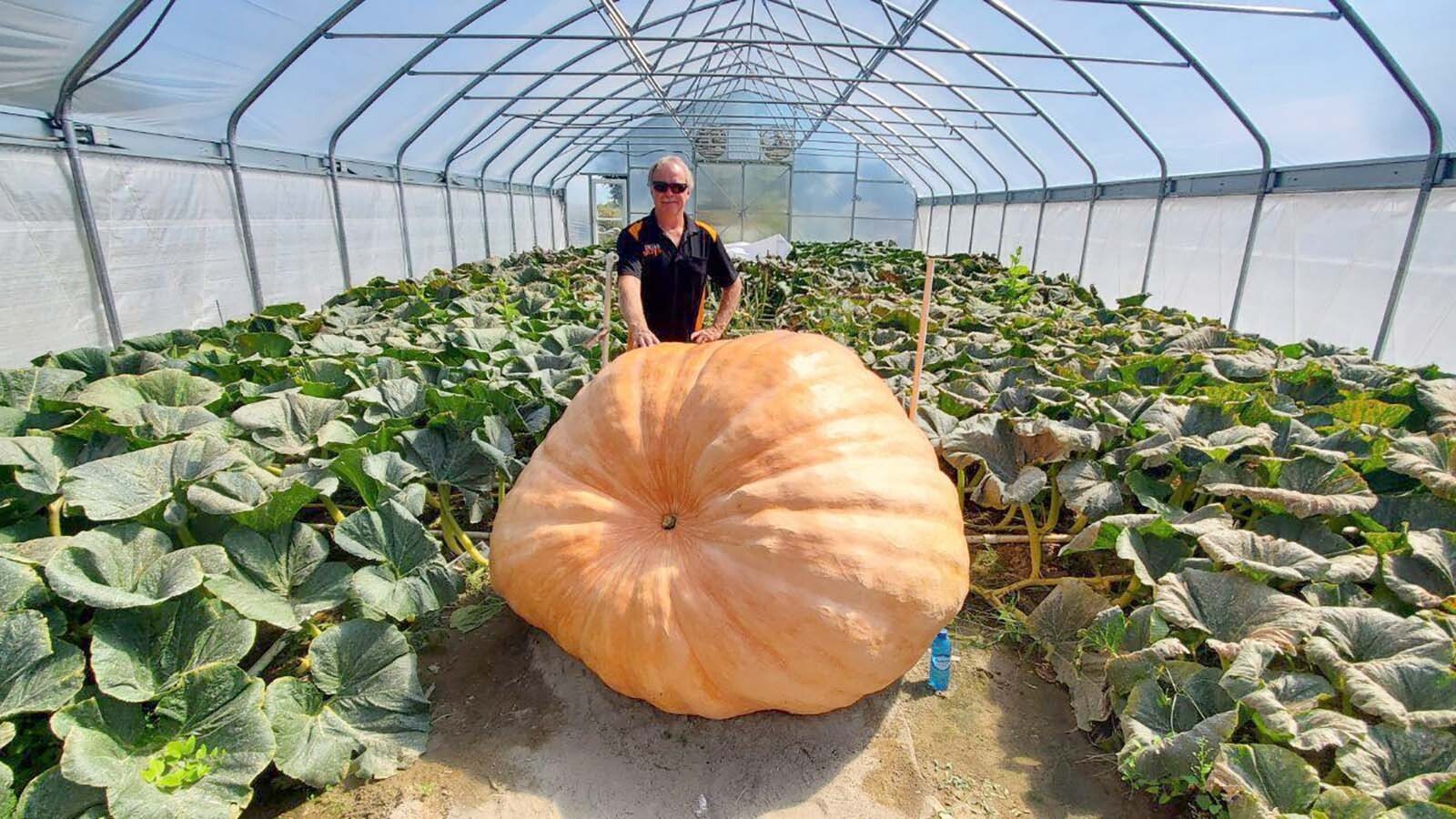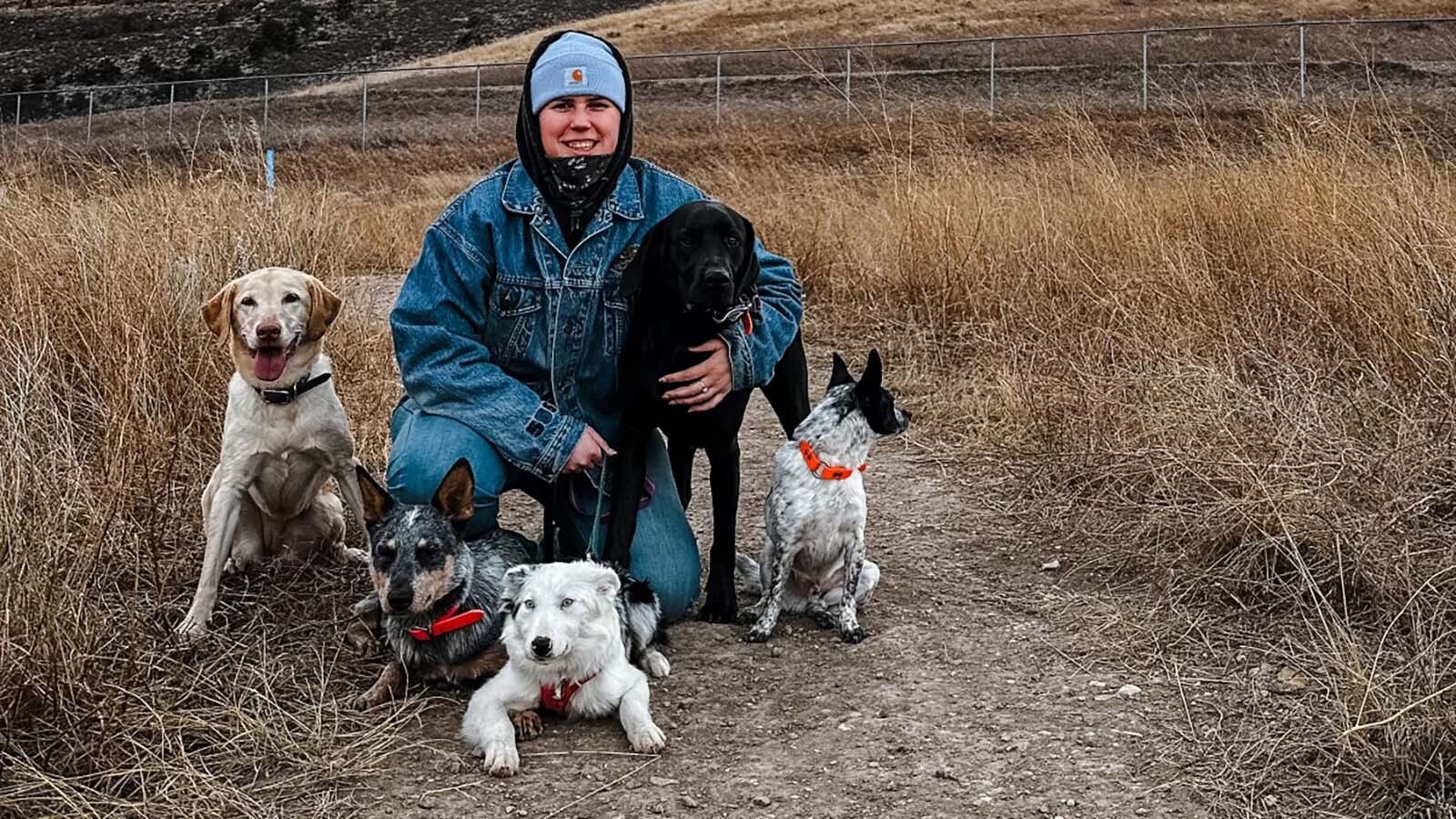It was 43 degrees and sunny in Worland on Monday and so spring-like Jay Richard spent part of the day mowing his immaculately curated grass.
For Richard’s pampered lawn, it’s always a balmy 85 degrees inside his greenhouse, custom-built for growing gargantuan pumpkins, but also some Super Bowl-worthy turf.
For someone with many reasons to hate winter, Richard’s been exceptionally pleased with the mild months so far in his neck of Wyoming.
“If the temperature is below my age, it's too damn cold,” he said. “And I'm 55. So, if it's below 55, it’s too damn cold.”
That’s one of hundreds of reasons Richard said he spends so much time in his greenhouse. And while he plans to raise a 2,000-plus-pounder there this year, there aren’t any there.
Yet.
Growing a gargantuan gourd is a year-round endeavor. Even if the soil isn’t growing a pumpkin, it should always be growing something, he said.
Cover Crops
Richard’s freshly mowed lawn was once a thriving field of cereal rye, a “cover crop” deliberately planted to become one with the soil in the greenhouse.
“People refer to it as a green fertilizer,” he said. “The roots go very deep. They're amazing roots that go way deep in the soil. And that's building the biological activity in the soil.”
Richard has attempted to grow cover crops in his pumpkin patches before, but this is the first time he’s done it successfully. With the protection and precise conditions created in the greenhouse, he’s laying a foundation for the massive pumpkins of the future.
Soil quality is essential in growing the giants, which has become Richard’s time-intensive side project. Even though he won awards in three states for last year’s efforts, he knew he was — and still is — growing in disadvantageous ground.
“I figured it’ll take five years to build the soil up to where it's able to perform at the level I'd like it to or what I think it needs to,” he said. “It's going to take a while. Soil is very, very, very old, and it doesn't like to change its ways very fast.”
That’s where the latest crop of cereal rye will provide a much-needed boost. Instead of gathering up and disposing of his trimmings, Richard leaves them where they lie.
“I just mulched everything that I mowed off of it, and it's just laying on top,” he said. “There's a lot of mulch on top of it, and I'll just let that rot in there and melt into the soil.”
Building The Soil
A few weeks before he plants his precious pumpkin seeds, Richard will use a rototiller to mix the rotting rye mulch into the soil and the deep roots beneath. That’ll spark the frenzy of biological activity he hopes for.
“It’s the first step and making much better soil than what I had last year,” he said.
Richard’s largest pumpkin was grown in the same soil in that greenhouse. So, it's remarkable to think that his 1,784-pound behemoth was technically a result of sub-par soil, according to his standards.
Not even Richard will speculate on how big his pumpkins could get when the soil reaches its full potential. He’s focused solely on the next pumpkin, a process he started when his last pumpkins were evicted last fall.
Of course, having a mild winter helps — and nobody’s happier about that than Richard.
A greenhouse has been an immense asset, but it’s not foolproof. Frost can even form inside the hot, humid conditions underneath the transparent plastic canopy.
Deep under the surface, the soil temperature has consistently stayed at 55 degrees. That’s largely thanks to Richard’s geothermal system and the fact that the soil hasn’t frozen this season.
The First 500
Nothing growing in Richard’s greenhouse is revolutionary, and he’s the first to acknowledge it. That’s why he takes the time to share his knowledge.
Every year, Richard hosts a free class at his detailing shop outside Worland to share his knowledge and experience with other potential pumpkin growers and anyone interested in the painstaking process.
“I give away seeds and information and give it all away for free, because it's worth about what you pay for it,” he said.
But Richard’s Growing Pains class isn’t just beneficial for anyone who wants to grow a giant pumpkin. The lessons he’s learning in his greenhouse can help ambitious green-thumbs cultivate any number of plants that would ordinarily fall victim to the ravages of Wyoming winters.
“I probably could have grown cold-weather crops like lettuce, spinach and radishes until we had that 30-below snap in January,” he said. “I've had jalapeno pepper plants that were 5 feet tall. They had over 300 jalapenos on a single plant.”
As for pumpkins, Richard doesn’t guarantee anything. He won’t rest on his laurels for the upcoming season.
“I'll get you past the first 500 pounds,” he said. “After that, it's the internet, networking, talking to people like me, and then the next level of growers. There’s plenty of information out there and some fantastic growers here in Wyoming.”
One of those growers is Andy Corbin of Cheyenne, Richard's friend and fellow grower who grew Wyoming’s largest pumpkin last fall. His gargantuan fruit weighed 2,062 pounds, breaking the record he set himself just a year earlier.
Richard’s annual Growing Pains class is scheduled for 2 p.m. March 17. A few weeks after that in mid-April, he intends to plant the pumpkin seeds that could set new personal and state records in 2024.
Richard planted the seeds of last year’s pumpkins May 4. This year, he’s aiming for an early April planting.
“I'm going to get a little bit more of a head start on it this year,” he said. “Almost 30 days sooner. It’s 30 more days to worry about it, but we'll see what happens.”
Andrew Rossi can be reached at arossi@cowboystatedaily.com.








